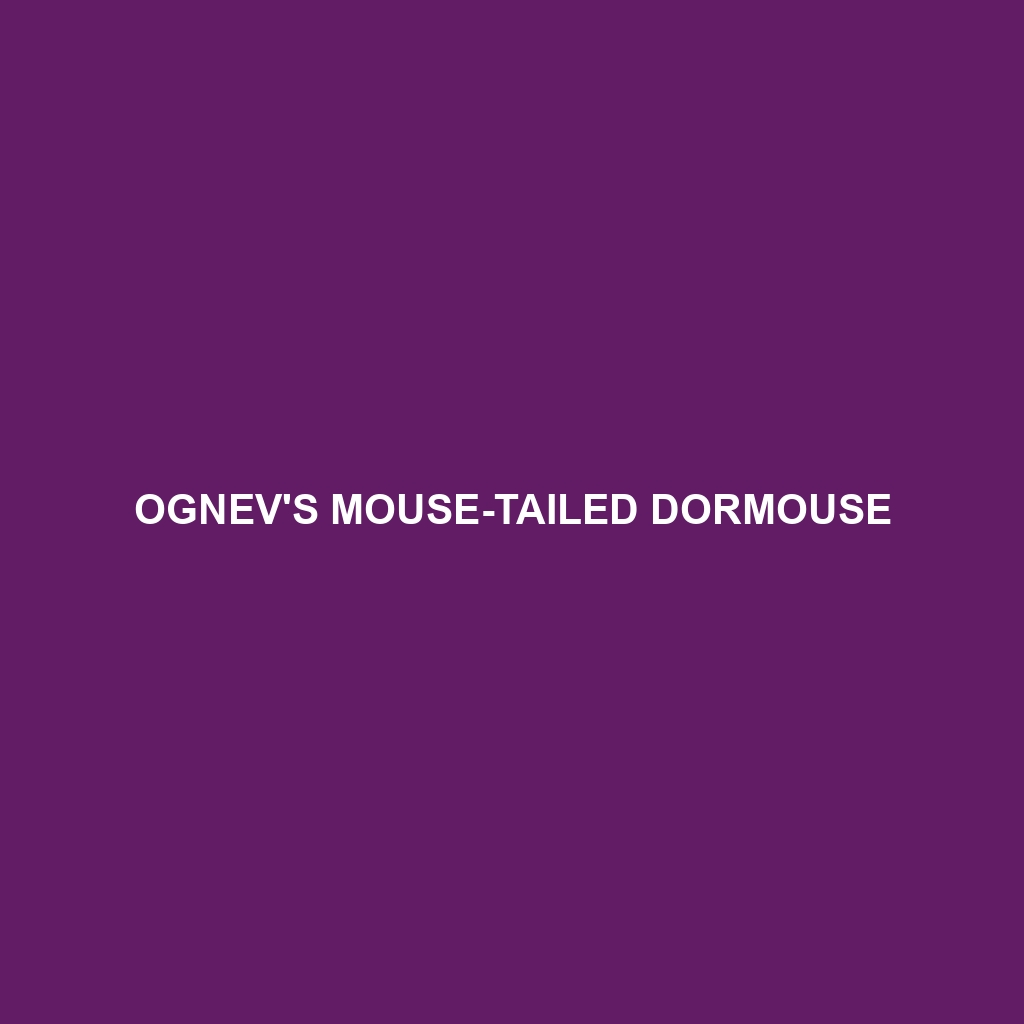Ognev’s Mouse-tailed Dormouse
Common Name: Ognev’s Mouse-tailed Dormouse
Scientific Name: Curlinus ognevi
Habitat: The Ognev’s Mouse-tailed Dormouse primarily inhabits temperate forests of the mountainous regions of Central Asia, particularly in countries like Tajikistan, Uzbekistan, and Kyrgyzstan. This species prefers mixed forests with a rich understorey, where it can find ample cover and nesting sites among the shrubs and tree branches. They thrive at altitudes between 1,500 to 2,500 meters, favoring environments that offer a mix of deciduous and coniferous trees.
Physical Characteristics: Ognev’s Mouse-tailed Dormouse is a small rodent, typically measuring about 8 to 10 cm in body length, with a tail that can exceed the body length, reaching up to 12 cm. Their fur is soft and predominantly light brown, adorned with a greyish hue on the belly. The species exhibits a distinctive elongated tail that is sparsely furred, which aids in balance while navigating through trees. Their large, expressive eyes and pointed ears contribute to their charming appearance, making them easily recognizable among dormouse species.
Behavior: This nocturnal creature is known for its arboreal lifestyle, where it skillfully climbs trees and shrubs in search of food. Ognev’s Mouse-tailed Dormouse is highly elusive, often hiding in nests made of leaves and moss. They exhibit crepuscular activity patterns, being most active during dusk and dawn. Socially, these dormice are generally solitary, though they may share nesting sites during colder months for warmth.
Diet: Ognev’s Mouse-tailed Dormouse is an omnivorous forager that primarily feeds on fruits, nuts, seeds, and insects. Their diet is particularly abundant during the summer months when berries and seeds are plentiful. They have been observed raiding insect nests, showcasing their adaptability in feeding habits that allow them to thrive in varied environments. Proper nutrition is critical for them, especially in preparation for hibernation during the colder seasons.
Reproduction: The breeding season for Ognev’s Mouse-tailed Dormouse typically occurs in spring, lasting from late April to early June. After a gestation period of approximately 24 days, female dormice give birth to a litter of 3 to 5 offspring. The young are born blind and hairless, relying solely on their mother for warmth and milk. As weaning occurs at around four weeks, juveniles begin to explore and foraging independently within a few months.
Conservation Status: Currently, the Ognev’s Mouse-tailed Dormouse is classified as “Vulnerable” by the IUCN Red List due to habitat loss and fragmentation caused by agricultural expansion and deforestation. Conservation efforts are essential to protect this species and its natural habitat to ensure its long-term survival.
Interesting Facts: One intriguing fact about Ognev’s Mouse-tailed Dormouse is its ability to enter a state of hibernation when temperatures drop significantly, significantly reducing its metabolic rate and allowing it to survive the harsh winters. Additionally, their long tail not only aids in climbing but also acts as a balance mechanism, enabling them to navigate precarious branches effortlessly.
Role in Ecosystem: Ognev’s Mouse-tailed Dormouse plays a vital role in its ecosystem by serving as both a predator and prey. As a consumer of fruit and seeds, these dormice help in seed dispersion, contributing to forest regeneration. They are also a food source for larger predators, thus maintaining the food web dynamics. Their presence indicates a healthy, biodiverse habitat, highlighting their ecological importance within their mountainous environments.
